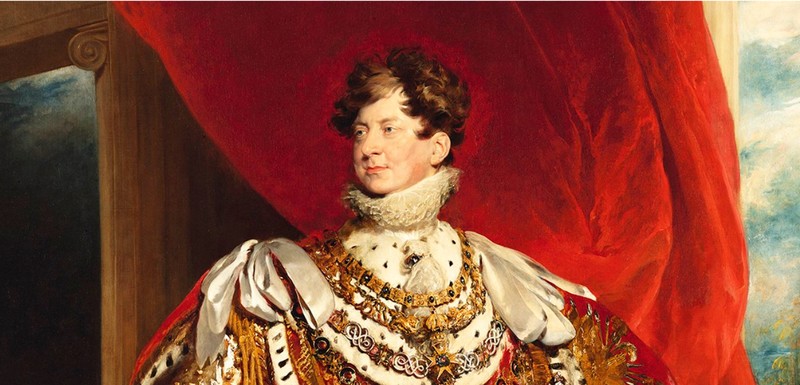George IV is arguably the most magnificent of British monarchs and formed an unrivalled collection of art, much of which remains in the Royal Collection. As Prince of Wales and, from 1820, magnificent king, he purchased paintings, metalwork, textiles, furniture, watercolours, books and ceramics in vast numbers, many of these works by the finest artists of the day.

George IV Art & Spectacle is at the Queen’s Gallery, Buckingham Palace; @rct.uk/
He was a king who spent outrageously, drank and ate too much, womanised and gambled, but George IV was perhaps not as dim, uncultured or physically repulsive as he is often made out.
An exhibition opening at Buckingham Palace on Friday is not trying to repair the reputation of a man they bill as Britain’s “exuberant king”, but it does argue he had many redeemable qualities.
At the time of his reign as king from 1820, George was disliked by the nation and endlessly satirised. Modern audiences have seen him portrayed in Blackadder as a preening simpleton; and in the drama Taboo he was an odious, bloated, skin-diseased horror.
Kate Heard, senior curator of prints and drawings at the Royal Collection Trust, said people who sat down with George had very different reactions.
“They found a really engaging intelligent man who could discuss anything, he could turn his mind and conversation to any topic.
“He has this public reputation, I won’t say it was undeserved, but the more people got to know him … they were very impressed.”
Heard said she hoped visitors would look at the extraordinary art and objects George acquired “and see a different side to him”.
George spent an absolute fortune but he had a very good eye, curators argue. Some of the finest works in the Royal Collection were collected and commissioned by him.
On display are works such as Rubens’ Landscape with Saint George and the Dragon, which had been in the collection of Charles I before his execution and was bought by George in 1814.
In 1811, he made his biggest ever purchase, 5,000 guineas for Rembrandt’s The Shipbuilder and his Wife. It has gone on display next to another Rembrandt he bought, a striking portrait of Agatha Bas.
The composer Joseph Haydn described George as “the handsomest man on God’s earth” and certainly he does look impressive in the portraits he commissioned to celebrate himself, which have gone on display, including Sir Thomas Lawrence’s coronation portrait.
The exhibition reunites for the first time items that were commissioned and worn by George for that flamboyant, and ludicrously expensive, coronation in 1821.
They include the Diamond Diadem, designed by the jewellers Rundell Bridge & Rundell. It is set with 1,333 diamonds and is on occasion worn, on the stamps and coins for example, by the present Queen.

Kathryn Jones, senior curator of decorative arts, said George wore it over a large broad-rimmed hat with ostrich feather plumes. “Among all of that you can just imagine the little diadem sparkling away.”
One of the most poignant objects in the show is a vividly coloured feathered cloak given when the king and queen of Hawaii made an unannounced visit to London. Sadly, they both caught measles while in England and died before they met George. “The gift was nevertheless presented,” said Jones. “They were quite a sensation when they arrived.”
George had many affairs and a disastrous marriage to his cousin Caroline of Brunswick. They loathed each other on sight.
A happier side to his love life is explored with the display of a pencil drawing by Richard Cosway newly acquired for the Royal Collection. It portrays Maria Fitzherbert, a woman to whom he was largely devoted all of his life.
When he died in 1830 he was buried with a miniature portrait of Fitzherbert around his neck.
• George IV: Art & Spectacle is at the Queen’s Gallery, Buckingham Palace, 15 November 2019 – 3 May 2020
guardian.co.uk © Guardian News & Media Limited 2010
Published via the Guardian News Feed plugin for WordPress.

